Physics and Astronomy
This area deals with the fundamental laws and building blocks of nature and how they interact, the properties and the behavior of matter, and research into space and time and their structures.
innovations-report provides in-depth reports and articles on subjects such as astrophysics, laser technologies, nuclear, quantum, particle and solid-state physics, nanotechnologies, planetary research and findings (Mars, Venus) and developments related to the Hubble Telescope.
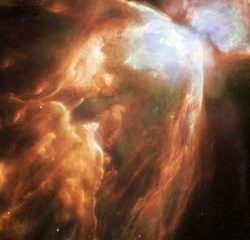
Demise in ice and fire
The Bug Nebula, NGC 6302, is one of the brightest and most extreme planetary nebulae known. At its centre lies a superhot dying star smothered in a blanket of ‘hailstones’. A new Hubble image reveals fresh detail in the wings of this ‘cosmic butterfly’.
This image of the Bug Nebula, taken with the NASA/ESA Hubble Space Telescope (HST), shows impressive walls of compressed gas. A torus (‘doughnut’) shaped mass of dust surrounds the inner nebula (seen at the upper right).
At the h
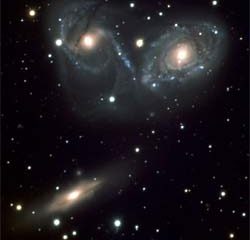
Cosmic Ballet or Devil’s Mask?
Very Large Telescope Witnesses Close Interaction in Galaxy Family
Stars like our Sun are members of galaxies, and most galaxies are themselves members of clusters of galaxies. In these, they move around among each other in a mostly slow and graceful ballet. But every now and then, two or more of the members may get too close for comfort – the movements become hectic, sometimes indeed dramatic, as when galaxies end up colliding.
ESO PR Photo 12/04 shows an example of such a co

Astronomer prepares for appearance of two comets
University of Chicago astronomer Patrick Palmer last studied a comet in 2000, but he is the member of research teams that will make scientific observations of two comets this spring, and they narrowly missed viewing a third.
Some astronomers are predicting that the two comets, NEAT and LINEAR, will be visible with the naked eye, in the eastern sky shortly before sunrise or in the western sky shortly after sunset, during the next few weeks. But neither comet will be anywhere near as bright
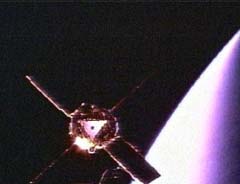
Gravity Probe B status report
At 9:57:24 am Pacific Daylight Time on Tuesday, April 20, 2004, the Gravity Probe B spacecraft had a picture-perfect launch from Vandenberg Air Force Base in South-central California. The Boeing Delta II rocket hit the exact center of the bull’s eye in placing the spacecraft in its target polar orbit, 400 miles above the Earth.
“The Gravity Probe B Mission Operations Team has performed very well during this critical spacecraft activation period,” said Tony Lyons, Gravity Probe B NASA D
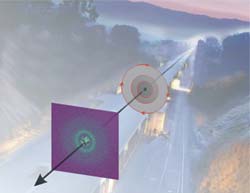
Scientists post a lower speed limit for magnetic switching
The speed of magnetic recording – a crucial factor in a computer’s power and multimedia capabilities – depends on how fast one can switch a magnet’s poles. An experiment at the Stanford Synchrotron Radiation Laboratory (SSRL) found that the ultimate speed of magnetic switching is at least 1,000 times slower than previously expected. The result, which appears in the April 22 issue of the journal Nature, has implications for future hard disk computer drive technologies.
In the push toward eve
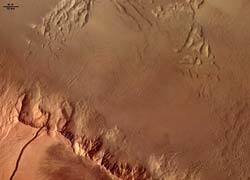
Western flank of Olympus Mons
These images from ESA’s Mars Express show the western flank of the shield volcano Olympus Mons in the Tharsis region of the western Martian hemisphere.
These images were taken by the High Resolution Stereo Camera (HRSC) during orbit 143 from an altitude of 266 kilometres. They were taken with a resolution of about 25 metres per pixel and are centred at 222° East and 22° North. North is to the right.
The images show the western flank of Olympus Mons and the escarpment at lower left ris